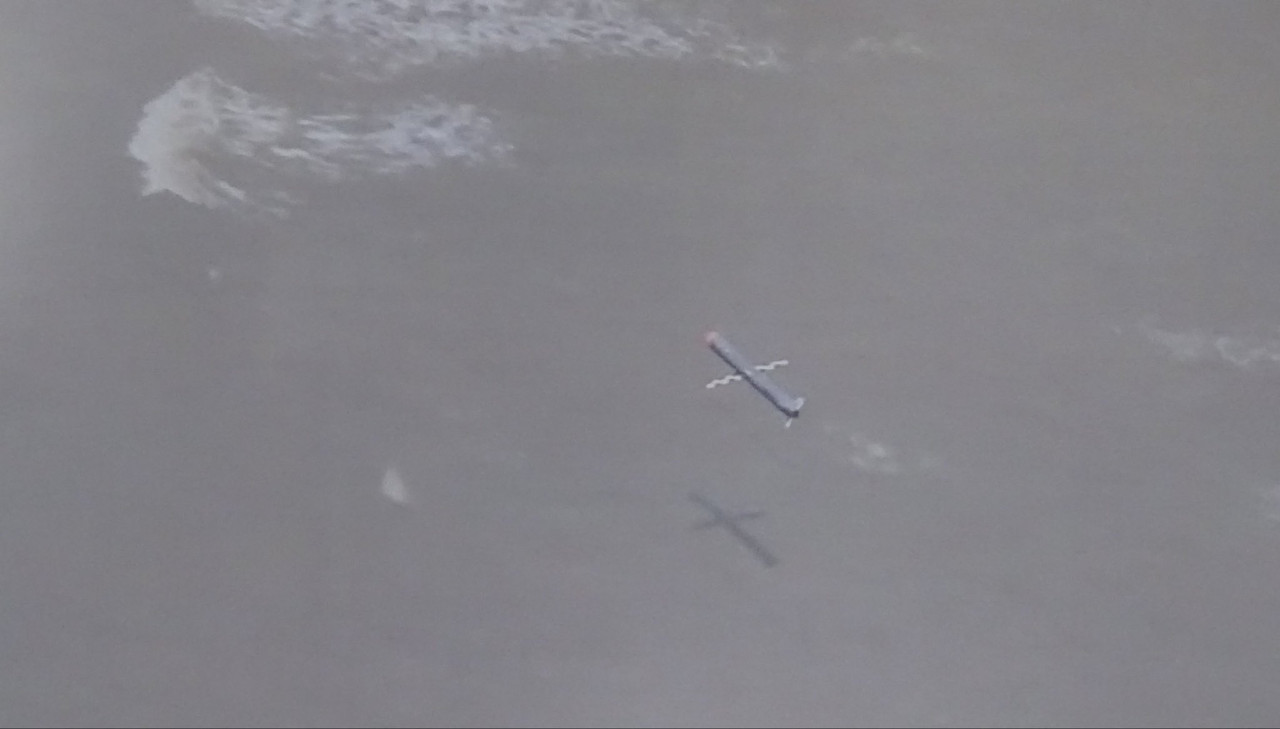SOURCE: AFI


A viral image capturing India’s Nirbhay cruise missile in action has sparked widespread attention for its impressive sea-skimming capabilities. The image shows the missile flying just 8 meters above the ocean surface, showcasing its ability to avoid detection by warship radars. This demonstration has reinforced Nirbhay’s reputation as a potent asset in India’s defense arsenal, capable of taking out frontline warships while evading sophisticated radar systems.
The sea-skimming maneuver demonstrated by the Nirbhay missile is a crucial feature that makes it highly effective against naval targets. By flying at an extremely low altitude, close to the ocean surface, the missile can avoid detection from enemy warships’ radar systems, which are designed to track threats coming from higher altitudes. This low-altitude flight profile minimizes the missile’s radar cross-section, making it difficult for enemy radars to pick it up until it’s too late to react.
Flying just 8 meters above the ocean surface puts the Nirbhay missile within the “radar horizon,” a range at which many radar systems struggle to detect objects due to the curvature of the Earth. This sea-skimming feature, coupled with Nirbhay’s long-range capability, allows the missile to approach enemy warships undetected, enhancing its chances of striking critical naval assets with precision.
Nirbhay’s ability to stay below radar detection is particularly advantageous for engaging frontline warships, such as destroyers, frigates, and aircraft carriers. Warships often rely on layered defense systems, including radar-guided surface-to-air missiles, to intercept incoming threats. However, the Nirbhay missile’s sea-skimming ability can bypass these defenses by staying out of the radar’s detection range until the last moment.
Additionally, the Nirbhay cruise missile’s maneuverability and terrain-hugging capabilities make it adaptable to a range of combat environments. Whether engaging land-based targets or naval vessels, the missile can execute evasive maneuvers, reducing its vulnerability to interception by enemy air defenses.
Developed by the Defence Research and Development Organisation (DRDO), the Nirbhay cruise missile is India’s answer to long-range, precision-guided strikes. With a range of around 1,000 kilometers, it is capable of carrying out deep strikes against both land and sea targets. The missile is equipped with a turbojet engine that allows it to fly at subsonic speeds while maintaining low visibility to enemy radars.
Nirbhay’s versatility is one of its most significant strengths. It can be armed with both conventional and nuclear warheads, allowing India to use it in a variety of mission profiles, from surgical strikes to large-scale offensives. The missile’s ability to carry multiple types of warheads enhances its strategic value, making it a formidable tool in India’s defence capabilities.